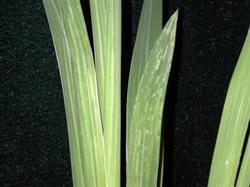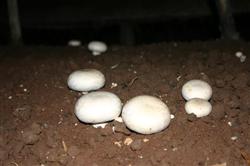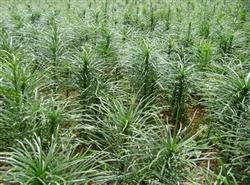Prevention and treatment of Lily asymptomatic virus

Lily is native to our country. Distributed in southeast, southwest, Henan, Hebei, Shaanxi, Gansu, there are wild and cultivated, mainly do cut flowers and decorate the garden for potted ornamental. Bulbs for edible and medicinal purposes, flowers contain aromatic oils as spices, fruits and so on. Cold-tolerant autumn planting scaly bulbous flowers. There are many cultivated varieties, and there are yellow, red, light red, miscellaneous colors in addition to white. First, it is easy to be infected with root rot in the middle and later stage of growth, showing bright dark brown rot spots. Basal rot is easy to occur in the stem base of the plant, which makes the leaves droop and turn yellow; on the leaves, it is also infected with leaf spot disease, which makes the plant stop growing. Bulb and scale rot disease, brown to dark brown spots on the underground stem, gradually expanding into the inside of the stem, causing the bulb to rot. There is also a blight in which the young leaves of the diseased plants show yellow-green or white spots, the severe leaves turn brown and the leaves appear curly. Control: Rhizoctonia solani is a physiological disease, other diseases are caused by fungi, can use more than 50% carbendazim, 1 kg per mu for root irrigation, or mixed with 50% benzoylammonium 100 times solution. Attention should be paid to the removal of diseased plants and immediate prevention and treatment at the initial stage of the disease. Lily asymptomatic virus, also known as lily virus or "lily curved stripe virus". (1) symptoms: generally asymptomatic, or mild blotches and wrinkled stripes appear on the leaves. It is easy to form compound infection, which produces necrotic spots when co-infected with CMV and brown bad spots or stripes when co-infected with tulip broken virus. (2) Distribution: it occurs in both the south and north of the Yangtze River, especially in Xiamen. (3) pathogen: the viral plasmid is linear, long and slightly curved, the length is 650nm and the diameter is 18nm. Sap transmission and aphid transmission. Musk lily as a diagnostic host. Lily bulbs sold on the market are generally poisonous. (4) Control: the virus-free bulb was selected as the provenance. Strengthen the prevention and control of aphids. Lily disease-free virus can also harm tulips, so these two kinds of flowers can not be mixed, interplanted or continuous cropping. The life span of lily seeds is very short, it will lose its germination power after half a year storage, and sowing seedlings need to be cultivated for many years to blossom. Therefore, cutting propagation is used to break off the scales of the old bulb, and the stem of each scale should have a small part of the stem base plate, buried in pure fine sand or mud, so that the upper part of the scale is exposed to the soil and maintained indoors or in a shade shed. After 3 to 4 months, one or two small bulbs can grow, break them down and plant them in the seedbed to continue cultivation, pot in spring, and blossom after 3 years of cultivation. In order to realize the annual flowering, low temperature treatment and storage must be carried out after lily bulb harvesting. First at 15 degrees Celsius, keep it for 4 to 5 days, then lower the temperature to 9 degrees Celsius for 3 weeks, and then lower to 0 degrees Celsius to 5 degrees Celsius for 8 weeks, that is, the completion of low temperature vernalization treatment stage, can enter the long-term storage of-2 degrees Celsius. However, it is necessary to carry out hierarchical cleaning, disinfection, packaging and so on before storage. Separate the big and small seed balls after mining. The small seed bulbs that have germinated or new roots can be cultivated immediately, and the large seed bulbs with new roots can be stored at low temperature.
- Prev

Eight key points of Disease and Pest Control of Pleurotus ostreatus
With the rapid development of mushroom production, it is the direction of growers and related technicians to improve economic benefits and reduce costs. There is a large amount of corn straw in North China, which can greatly reduce the cost of mushroom cultivation instead of rice straw. The related techniques are introduced as follows: 1. Mushroom culture material formula.
- Next

Lily speed should prevent waterlogging for a long time.
The management before emergence from sowing to before and after emergence of lily is mainly to clear the ditch and drainage to ensure that the lily land is neither dry nor waterlogged, there is no low temperature freezing injury, and ensure the normal growth of bulb root system. Seedling stage management is generally in late April or early May this stage, when the seedling height of about 10 cm, the general mu of rotten.
Related
- Fuxing push coffee new agricultural production and marketing class: lack of small-scale processing plants
- Jujube rice field leisure farm deep ploughing Yilan for five years to create a space for organic food and play
- Nongyu Farm-A trial of organic papaya for brave women with advanced technology
- Four points for attention in the prevention and control of diseases and insect pests of edible fungi
- How to add nutrient solution to Edible Fungi
- Is there any good way to control edible fungus mites?
- Open Inoculation Technology of Edible Fungi
- Is there any clever way to use fertilizer for edible fungus in winter?
- What agents are used to kill the pathogens of edible fungi in the mushroom shed?
- Rapid drying of Edible Fungi

